Overview
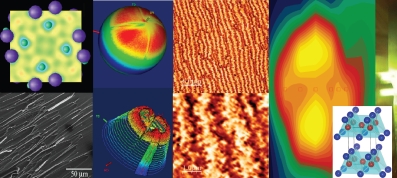
From the left, first column: (upper figure) Cut plane view of electron bonding charge densities of an iron-phosphorus compound obtained from ab initio calculations, and (lower figure) scanning electron micrograph of fracture surface of ductile amorphous steel showing network of plastic deformation zones. Second column: Pole figures of a (002) MnAl thin film deposited on a MgO substrate. Third column: (upper) The magnetic strip domain structure of MnAl thin film revealed by Magnetic Force Microscopy image. (Lower) The detailed magnetic parallel strip domains showing the width is ~10 nm. Fourth column: Color contour map of the strongly anisotropic spin resonance neutron scattering intensity in the momentum space obtained from superconducting FeTe0.5Se0.5 whose crystal structure is shown in the inset.
Condensed matter physics seeks to understand the striking new physical properties that may emerge when very large numbers of atoms or molecules organize into solids or liquids. Research in this area has led to fundamental breakthroughs in our understanding of metals, semiconductors and superconductors, as well as to the inventions of the transistor, diode laser, and integrated circuit. Condensed matter physics thus comprises the technological underpinning for the entire modern computer and communications industry. For these reasons, worldwide, this branch of physics commands the largest number of researchers, who work in academic institutions, major industrial and government laboratories, and small entrepreneurial enterprises. The problems addressed by condensed matter physicists are often interdiscplinary in nature, affecting a number of other scientific fields including chemistry, biology, electrical engineering, and materials science. The University of Virginia maintains a diverse and vigorous research program in both experimental and theoretical condensed matter physics.
The experimental condensed matter research groups at UVa explore the structural, optical, electronic, and magnetic properties of different types of solids ranging from amorphous to crystalline systems with novel properties. Activities include the synthesis and characterization of 2D and 3D quantum materials, topological insulators and semimetals, cuprate high-temperature superconductors, colossal magneto resistive manganites, spintronic magnetic thin films, photovoltaic perovskites, and complex composition alloys, measurements of electronic and magnetic properties using various advanced analytical tools including angle-resolved photoemission spectroscopy, characterization of static and dynamic lattice effects using the pair density function analysis. The condensed matter community at UVa has access to a variety of cryogenic facilities capable of scanning temperatures from as low as 15 mK to room temperature, several physical property measurement systems, different scanning-probe instruments such as scanning tunneling, atomic force, and magnetic force microscopes, various thin-film deposition systems, and a range of microwave and millimeter-wave analytic instruments. In addition, many research projects work closely with Electrical Engineering and Materials Science Departments, using facilities such as the Microfabrication Laboratories and Nanoscale Materials Characterization Facility, as well as national labs where high magnetic field sources are available. The group also performs research at national and international neutron and x-ray facilities and carries out high precision measurements on the atomistic properties of materials, particularly under high pressure.
Theoretical condensed matter physicists at UVa try to arrive at a quantitative description of many unusual properties observed in novel materials and fluids. Such research includes an investigation into what makes the new generation of high-temperature superconductors work as they do, solving model problems like quantum spin chains which are believed to contain the features of newly synthesized low-dimensional metals and magnets. Studies of the structure of magnetic vortices in superconductors and the interactions that bind atoms and molecules to solid surfaces are also underway. For example, the point-contact tunneling amplitude for the fractional quantum Hall effect was recently exactly computed.
Personnel
 Tomoya Asaba
Tomoya AsabaTomoya Asaba will join the Department of Physics in January 2025. Asaba focuses on experimental condensed matter physics, and his research primarily delves into the complexities of correlated and topological materials, particularly in low-dimensional systems. His innovative approach incorporates techniques such as epitaxial growth, scanning tunneling microscopy and thermoelectric power measurements. His studies on fabricating quantum wires of RuCl3 and the loop current state in CsV3Sb5 have been published in prestigious journals like Science Advances and Nature Physics. ... More>
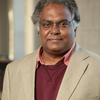 Utpal Chatterjee
Utpal ChatterjeeMy research is focused on a branch of physics, commonly known as condensed matter physics, which is essentially the study of physical properties of matter in their liquid or solid state employing the principles of quantum as well as statistical mechanics. My research interest lies in the experimental investigations of various solid state systems which exhibit novel electronic and magnetic properties, such as cuprate high temperature superconductors, colossal magneto resistive manganites, different transition metal dichalcogenides hosting charge density wave (CDW) as well as metal ... More>
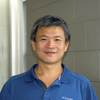 Gia-Wei Chern
Gia-Wei ChernMy primary research interests are in theoretical condensed matter physics with a special focus on magnetism and strongly correlated electron systems. Our recent research efforts focus on applying machine learning (ML) and data science methods to enable multi-scale dynamical modeling of complex systems and functional electronic materials, with a particular interest in their nonequilibrium dynamics. I am also a member of the EXCLAIM term whose goal is to apply ML/AI approaches to understand hadron structures in nuclear physics. More>
 Israel Klich
Israel KlichMy main field of interest is condensed matter physics with strong overlaps with mathematical physics and field theory. My research interests include entanglement in many-body systems, the Casimir effect, topological order and non-equilibrium statistical mechanics. More>
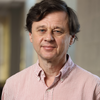 Eugene Kolomeisky
Eugene KolomeiskyMy current research effort consists of trying to understand static and dynamic properties of low-dimensional nonuniform quantum Bose gases. The experimental observation of Bose-Einstein condensation (1995) in trapped alkali vapors has ushered in a new era of superlow-temperature physics bridging the disciplines of atomic and condensed matter physics. Today, experimentalists can produce and manipulate condensates of different sizes and various geometries, and practical applications of this new state of matter are just on the horizon. Some of these applications (ultrasensitive ... More>
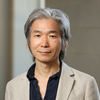 Seung-Hun Lee
Seung-Hun LeeMy research focuses on strongly correlated materials such as non-conventional high temperature superconductors, quantum magnets, frustrated spin systems, magnetic molecules, and multiferroics. The main experimental techniques that the group uses are elastic and inelastic neutron scattering with which one can directly probe the many body response function. Neutron scattering experiments are performed at several domestic and international facilities. My group also has the in-house capability of growing high quality single crystals of transition metal oxides using a state-of-the-art ... More>
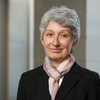 Despina Louca
Despina LoucaProfessor Louca studies phase transitions in condensed matter systems. Louca is interested in understanding how the underlying interactions involving the spin, charge and lattice degrees of freedom lead to emergent behaviors and properties such as polaron formation, Jahn-Teller type distortions, spin and charge density waves, superconductivity and quantum spin liquid states. The most recent systems of interest include topological insulators and semimetals, spintronic antiferromagnets of the I-Mn-V class, transition metal dichalcogenides, disorder ... More>
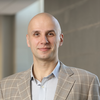 Dmytro Pesin
Dmytro PesinA condensed matter theorist whose research focuses on quantum many-particle systems, Dmytro Pesin studies the effects of particle correlations and disorder physics in topological systems, providing guidance for material research by considering realistic aspects of topological phases. In particular, Prof. Pesin studies the effects of band geometry on the electronic hydrodynamics in clean crystals, in particular Dirac/Weyl semimetals. He also works on developing the theory of current-induced phenomena in three-dimensional metals with nontrivial band geometry. More>
 Joseph Poon
Joseph PoonMy research group currently focuses on three projects: (i) Experimental and computational study of thermoelectric properties of narrow-gap semiconductors and semimetals. The narrow-bandgap semiconductors studied are often in the proximity of topological semimetals that show unusual thermo-magnetic and electrical transport properties. (ii) Synthesis of thin films and computational study of ferrimagnetic and antiferromagnetic heterostructures that show skyrmionic state and anomalous Hall effect. The unique magnetic spin texture and fast dynamics are ideal for low-power and ultrafast ... More>
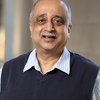 Bellave S. Shivaram
Bellave S. ShivaramProfessor Shivaram is a condensed matter experimentalist whose research spans a wide variety of key areas. His scientific career started with work on the quantum fluid, liquid 3He, a strongly correlated Fermi system, focusing on its acoustic properties in the superfluid state. He has stayed with the theme of strongly correlated Fermi systems investigating their superconducting and magnetic properties at very low temperatures and high magnetic fields. A significant portion of his work has focused on the thermodynamic, electromagnetic and acoustic properties of ... More>
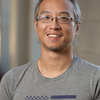 Chi Yan Jeffrey Teo
Chi Yan Jeffrey TeoA central theme of condensed matter physics is the study of systems with emergent collective degrees of freedom that can behave very differently from the microscopic individual constituents from which they arise. Quantum mechanics provides a further topological twist to the conventional theory. Due to strong correlation effects, the quantum ground state of a condensed matter system can be spatially entangled to an extent where its emergent quasiparticles behave so exotically that they are impossible to be realized by conventional fundamental particles. For example, an ... More>
 Marija Vucelja
Marija VuceljaMarija Vucelja's research field is nonequilibrium statistical physics, with applications to soft-condensed matter and computational physics (physics of sampling). More>
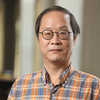 Jongsoo Yoon
Jongsoo YoonMy research is focused on understanding of phases and phase transitions in two dimensional (2D) electronic systems such as thin superconductor or metal films and semiconductor heterostructure or quantum well. At sufficiently low temperatures and high magnetic fields, these 2D systems exhibit many interesting quantum phenomena including integer and fractional quantum Hall effect, quantum phase transitions, and electron crystallization. However, many aspects of these phenomena are poorly understood. More>
 Physics at Virginia
Physics at Virginia